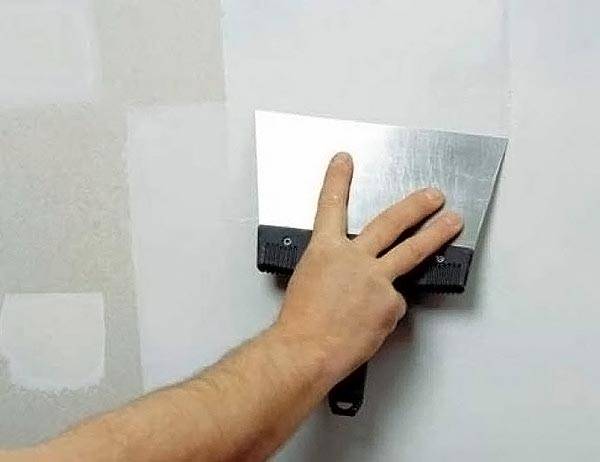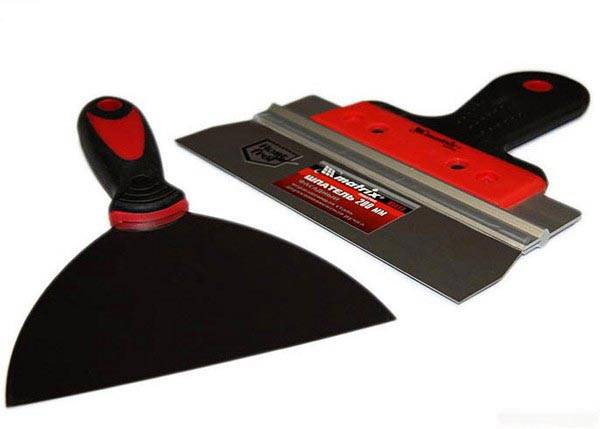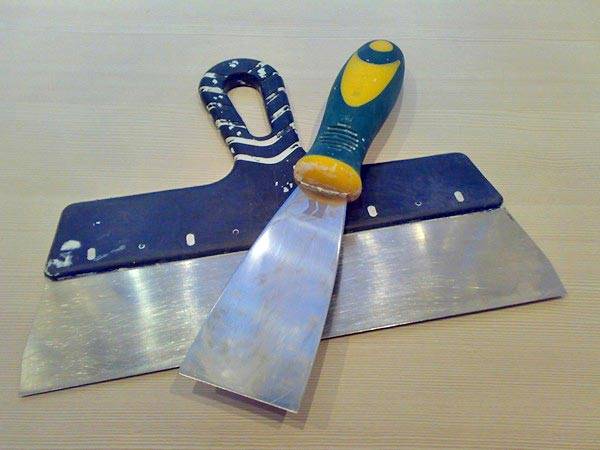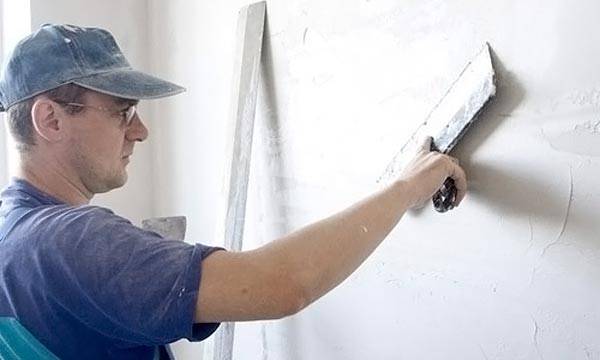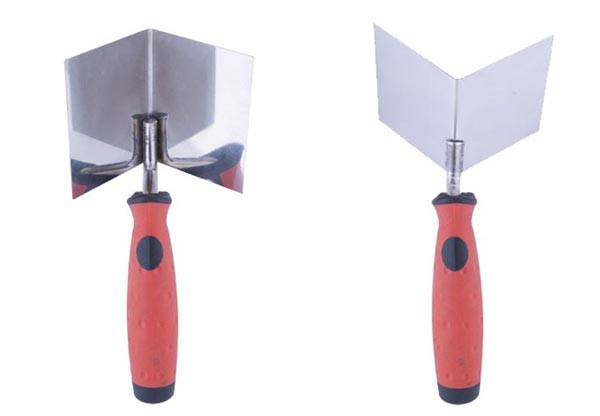Trowel for wall putty - choose the right one
ShPatel is the most commonly used repair management tool. A spatula for wall putty is used at all stages of finishing work. It is important to choose the right tools for all work. A wide variety of shapes and sizes are available for specific applications. Usually it is metal plastic with a comfortable handle. A sufficiently sharp blade is imperative. It is used for finishing and painting works.
The content of the article
Selection criteria
The main property is sufficient blade rigidity. If this criterion is not met, then the work will be of poor quality. Professional devices are equipped with a comfortable rubberized grip. For the organization of any work, three types are acquired - narrow, wide and medium. Specialized models are designed to handle corners and apply specific surface conditions.
How to properly hold a spatula when puttingty walls
Reliable tools are made from durable steel. Quality appliances do not deform and are easy to clean. Look for products with perfectly flat surfaces and a sharpened blade. The professional tool should not bend under the pressure of the putty mixture.
The technique is as follows - applying putty and leveling it. Hold the tool at a 45 degree angle. Movement can be different, the best result is achieved with uniform, equally directed strokes. A small putty device is used to dispense the mixture onto a large one. The use of the first is advisable if it is necessary to process small areas.
Application
Narrow tools are used to repair the smallest flaws in walls and smooth smooth surfaces. Not suitable for rough wall leveling.
The middle trowel for wall putty removes pits, it is used to smooth the putty surfaces.
Oversized tools with thick blades are used for coarse primary machining and for removing large cracks.
It is always necessary to consider the type of filler and the base material to select the best option.
A correct spatula will only bend with great effort, and the area around the blade will bend. The central part remains motionless. The mixture is placed in the center. And then with dashed movements they are distributed on the surface. To save money, the plastic mixture is mixed with the main one until a homogeneous consistency is formed. Thick material can no longer be used.
The corners of the trowel must be held with your free hand to prevent the mixture from falling to the floor. To cut the bumps, you need to press evenly over the entire plane of the blade. Sealing large pits is performed strictly at right angles.
To avoid the formation of bumps and sagging, it is necessary to reduce the angle of inclination of the instrument to the base, for example, from 60 to 25 degrees and to flat application.
Process features
The final result depends on the quality of work. The technique depends on the material used for post-processing - wallpaper, paint, plaster and others, while all processes have standard procedures.
The whole process is logically divided into several stages.
At the first, walls, tools and mixtures are prepared. All cracks and irregularities must be removed, surfaces sanded and degreased for better bonding of materials.
Next comes the laborious priming process. It is impossible to save on this mixture, because the success of the work and the service life depend on the quality of the primer. It will be rational to apply several layers.
To proceed to the next step, you need to clearly know how to hold the trowel when filling the walls. After the base has dried, a starter putty is applied. To do this, it is necessary to dilute the dry mixture with water to the required consistency. It is recommended to mix large volumes with a construction mixer to obtain an absolutely homogeneous mixture. With a small spatula, the material is applied to a wide one. At an angle of 45 degrees, application begins on the surface. Use a large tool to clean off any excess drying time in time to prevent scratching the walls.
After drying, the primer is applied again to improve the quality of the last finishing coat. Decorating is done with both standard and curly spatulas to obtain the expected effect.
The process is easy enough. But if the work is planned to be performed for the first time, then it is better to resort to the help of specialists.
Recommendations
- Seal joints and cracks securely beforehand. This will help to avoid collapsing walls in the future.
- Choose only high quality mixtures.
- Follow all steps according to the instructions.
- Buy dry putties. Their quality is much higher than usual.
- Clean and sand the wall surfaces before work.
- For large volumes of work, always use large-sized tools so that the mixture does not dry out during work.
- Perform all work in a respirator.
- Use two spatulas. This will speed up the finishing process.
- Wash tools clean after use. Otherwise, the cement may dry out.
Conclusion
There are a lot of spatulas for wall putty on the construction market. Choose models for specific purposes. This will help save time and a decent amount for reworking finishing work. Purchase tools from reliable suppliers in order to avoid incidental situations when the device breaks in the middle of the putty work and violates the entire process technology.
Video review on choosing a spatula for wall putty



